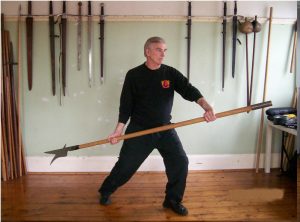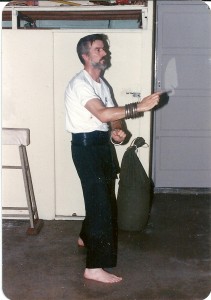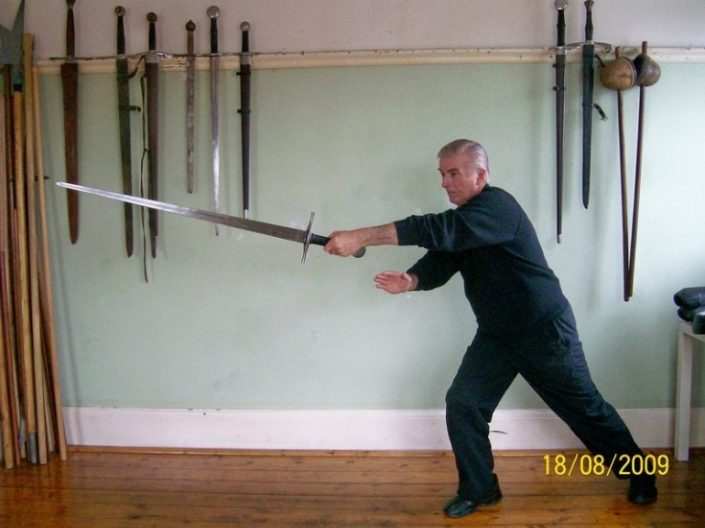Terry Brown is the man who introduced England’s indigenous fighting systems to modern audiences. It was Terry (who began his research in 1979) who coined the expression English martial arts, the name by which these fabulous fighting arts are now known throughout the world.
Terry’s book English Martial Arts has been in print for over 20 years and is essential reading for anyone interested in the traditional fighting arts of England.
Scroll down to read more about Terry’s extensive martial arts background.
Click Below to buy Terry’s book. (Opens external link)
My Kung Fu background
Apart from the occasional school yard scrap my first experience of sustained violence aimed in my direction was a ‘milling’ session.
Milling was fisticuffs of the most basic and brutal kind that all recruits to the British army had to undergo during their basic training; it was hardly comparable to organised boxing in that it was just two people pounding each other as hard and as often as possible.
I went down twice but but ‘passed’ because, so I was told, I fought back in what was a pretty one-sided punch up. For those of you who have never heard about milling, have a look at this video. The fights featured will give you a good idea of how the British army tests the mettle of its recruits.
Discovering The Beggar’s Art
Following a three year posting in Germany, which I loved, I was posted to Singapore and it was here that I was to become reacquainted with the art of one-on-one violence after seeing an advert in the Singapore Straits Times newspaper for martial arts training. The advert contained a photograph that appeared to show a flying man.
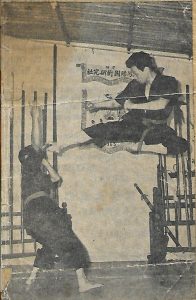
The ‘flying man’ was sifu Lai one of Fong Yang kung fu’s instructors.
Intrigued by the flying man (and the promise of free medical attention for injuries) I went along to the Fong Yang Athletic Association and met sifu Tan Siew Cheng, a man who was to have a profound influence on my life. That was more than fifty years ago and although I no longer teach the Beggars Art I still practise it to this day.




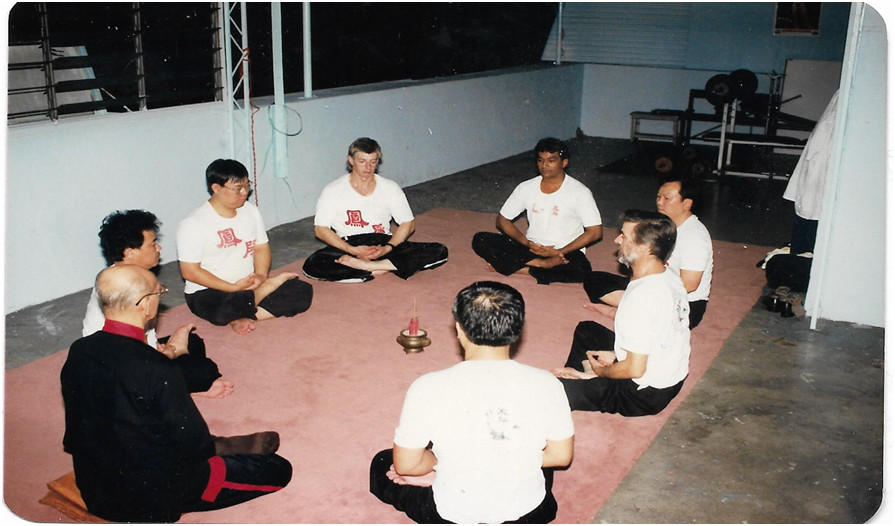
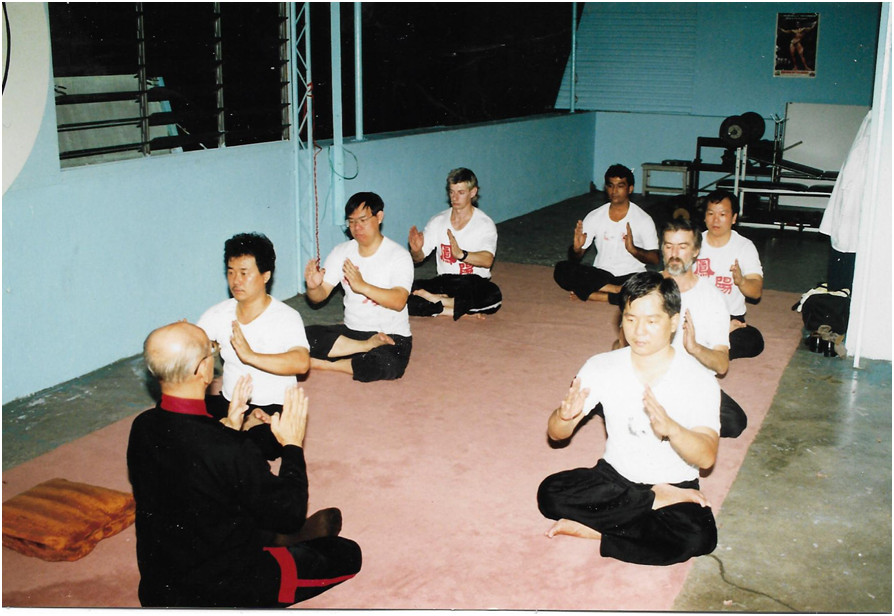
Shortly after leaving the army in 1972 I was appointed UK chief Instructor by sifu Tan for Fong Yang kung fu and Khong Chang (a distinct school from that of Tan’s son who also taught Khong Chang). My school was recognised by the British Kung Fu Council. I went on to become the honorary secretary of the BKFC; I was subsequently appointed as the general secretary of the European kung fu union. In addition to these positions I was also appointed as a BKFC delegate to the martial arts commission and as a sports council representative for the South East of England. I also became a BKFC senior referee. In addition many of my Fong Yang students went on to win European, British and regional tournament championships and podium placings.
Fong Yang kung fu (aka the Beggars art) is a superb martial arts system so if you are able to travel to Singapore why not look it up because that’s where the art is based. You will be made welcome and you will have the chance to learn an art that dates back 1800 years.
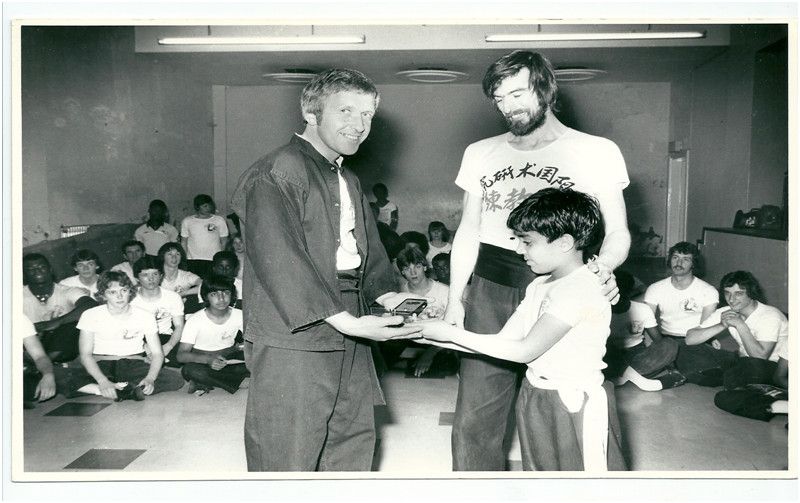
My discovery of English Martial Arts
Around 1979 I was reading a biography of Bob Fitzimmons the world boxing champion. In this book it mentioned that Bob was of the new generation of boxers who knew nothing of the backsword and quarterstaff; intrigued by the name backsword, a weapon of which I had never heard, I set about finding out what it was. This led me to Joseph Strutt’s Sports and Pastimes of the People of England,1810. This in turn led, eventually, to a whole raft of books and manuscripts detailing both armed and unarmed English martial arts which became the basis of my book English Martial Arts.
Before I had completed my book I decided to road test my interpretations of the techniques and principles that I had garnered from the various sources for English martial arts. Accordingly I placed an advert in a martial arts magazine for a small number of students to study English martial arts; This led to Frank Docherty contacting me, this was in 1994, and together we vigorously tested my work. When I was confident I had worked things out correctly I went ahead and published English Martial Arts.
From that point on Frank and I taught English martial arts as well as giving numerous demonstrations. Their hard work paid off and has resulted in many magazine articles being published as well as several television programmes featuring English martial arts. For a full list of both visit my website:
www.terrybrownenglishmartialarts.com
I am immensely proud that I was able to re-introduced England’s superb fighting arts to the world. Over the years many fine martial arts instructors have trained with me in English martial arts and to see their thoughts and comments about their experiences please go to this link:-
I had my own private training room (pictured below) which is where myself and Frank pressure- tested my interpretations of bygone masters of English martial arts.
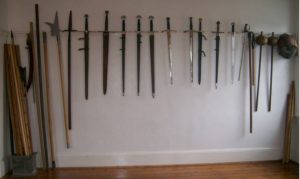
I have made a point of practising and teaching all of the traditional weapons of English martial arts. Some weapons, such as the corn flails (threshalls) have no known English instruction manuals or manuscripts, other than the odd illustration and descriptions of their use as an agricultural tool. I therefore based their use on that of the quarterstaff which works very well for the threshalls. One problem when sparring with threshalls is the extreme force with which the swingle (or sweple) can land. The swingle is the moving section at the forward end of the tool and it can land with sufficient force than can kill or seriously injure. Fortunately our ancestors overcame the problem by substituting rope instead of wood for the swingle. Of course rope behaves differently to wood but at least it allows for full speed and full force bouting.



English Pugilism
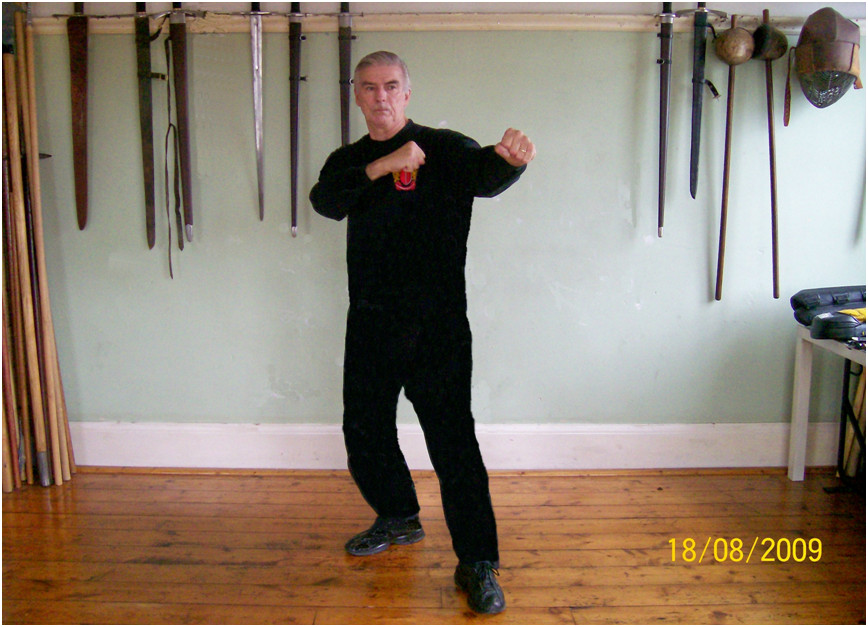
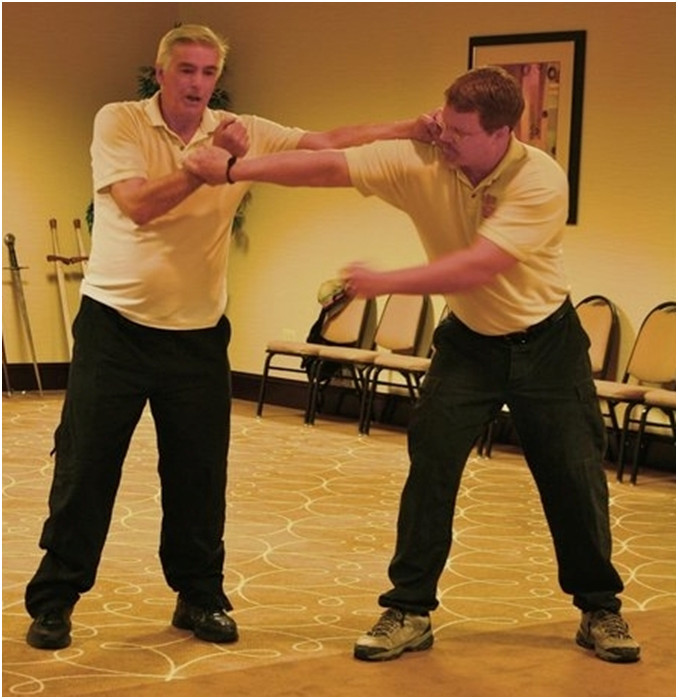
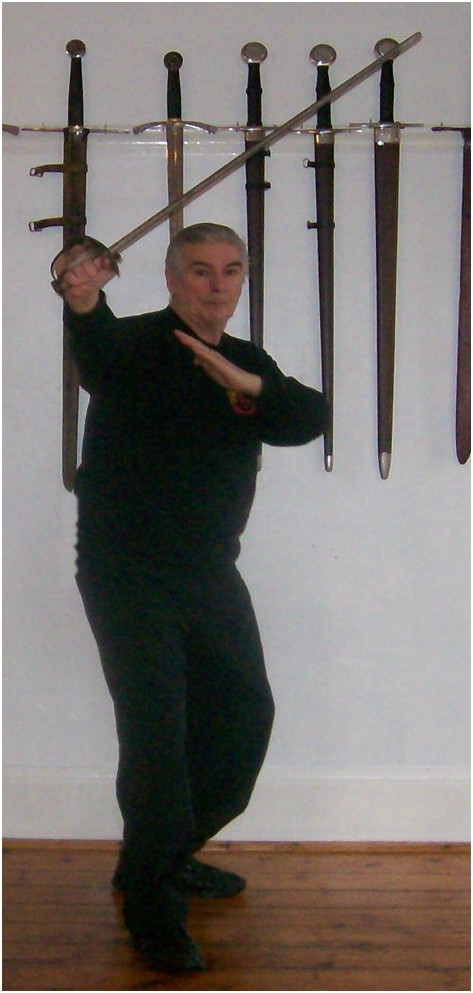
What attracted me to English martial arts wasn’t just my nationality it was mainly the sheer common sense and simplicity of the principles of what the English called the True Fight; the contensts of the true fight are a ‘staying alive handbook’. It seems to me that the principles of the staying alive handbook are one of of the reasons our forbears were such successful warriors.
I hope that you will enjoy training in the English Martial Arts as much as I do.

